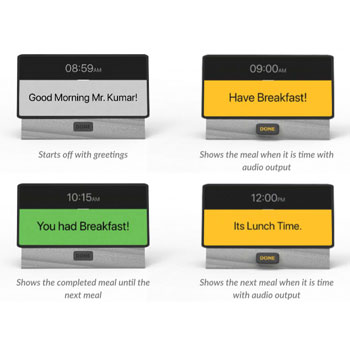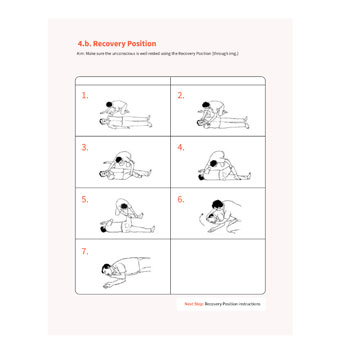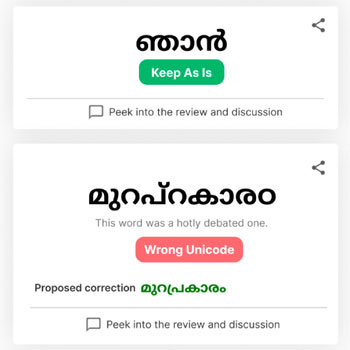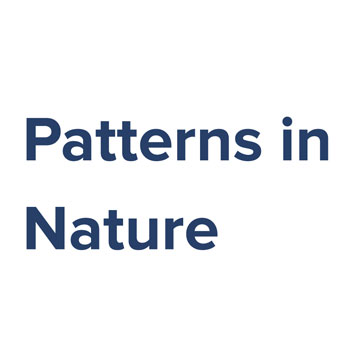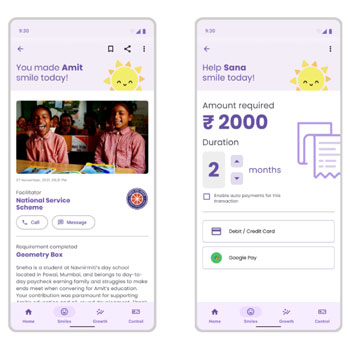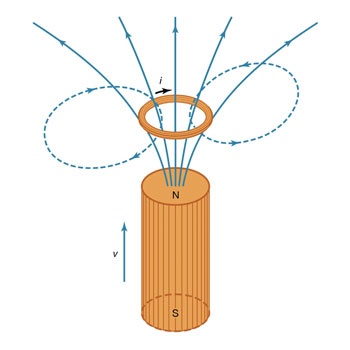Interaction Design
Batch 2018-2022
(14 items)
Interaction DesignBatch 2018-2022
(14 items)
(14 items)
Assistive Aid for the Elderly with Early Dementia
by Anagha Aneesh
by Anagha Aneesh
Memory loss is unusual forgetfulness, which is a persistent failure to remember. It results from changes in the brain and can be a normal part of ageing or a symptom of another medical condition or damage. It often goes undiagnosed mainly because people think their memory loss is not a big deal and sometimes because they do not want to be diagnosed as a patient with memory impairment. People with dementia were found to be less cooperative and to exhibit varying levels of confidence, leading to discord in the household. People with dementia face difficulties completing daily tasks and are often left being confused about whether a task is already done or not. They need constant attention from their carers to keep track of their activities, as repetition or skipping a particular activity, for example, taking medicine for blood pressure, may cause a major imbalance in their bodies with adverse effects. In such a case, an assistive aid that could make them more self-reliant, hence taking some of the responsibility off the carer’s shoulders, might make a huge difference in a dementia-caring household. This project aims at developing assistive aids for people falling under the first three stages of dementia to help them get through their daily routine while reducing their level of dependence on their caregivers. This report covers the secondary research on existing alternatives and past projects and primary research conducted on 15 subjects, the results of the research, and a suggested solution.
Details >>Web Experience to enable more Periodic Blood Donations in India to tackle the current shortage of blood
by Anagha Aneesh
by Anagha Aneesh
India is currently experiencing a blood scarcity due to a lack of voluntary donors and a reduction in the frequency of regular donors, who are concerned about the safety of visiting a facility and donating blood following the pandemic. A significant portion of the adult population is unaware of the need and seriousness of the problem and frequently succumbs to misunderstandings, resulting in no donation. By studying the common trends and demographics of periodic donors, as well as the level of awareness that people have in this sector, this project aims to better understand how to address the country's high demand for blood and low supply, as well as identify motivations that could help the situation. The primary objective of the study would be to devise how to bring in more first-time donors and encourage repeated donations to tackle the current shortage of blood in the country. Two types of studies, both qualitative and quantitative, were conducted. The findings from the study were mapped out and overlapped with the findings from existing literature to derive major conclusions. Based on these conclusions, the final output was created, which is a webspace that unifies existing platforms to provide a transparent experience for all user groups while making the general public aware of the necessity and benefits, clearing misconceptions, motivating and guiding the donors, and finally allowing the donation facilities to provide better outreach and experience to the donors. Evaluation criteria were also devised and planned for the future.
Details >>Designing plastic lamp shades- Material design and exploration
by Avinash Manikandan
by Avinash Manikandan
Through the course of my college education, I have gotten disconnected from fiddling with forms and products. The design exploration project seemed like the perfect opportunity to revisit and satisfy my interest in this field. Amongst all the available options for material design, designing lamps and lighting fixtures was the obvious choice for me, as it offers the most freedom for exploration, with infinite possibilities for shaping light. I wanted to make sure I get the satisfaction of tangible output, and Prof. Sandesh believed in the same, making it an easy decision for me.
Details >>Vocabulary Memorization Application for Hindi Medium School Students
by Drishti Das
by Drishti Das
The English language plays an important role in today’s world. In most Hindi Medium Schools, English is taught as a second language from classes 5-7. The students are struggling with it given their lack of exposure, motivation, and current sociological conditions. The main aim of the curriculum is to enable students to communicate and understand the language effectively. In order for that to happen, the first step is to learn the script. The second important step is to master the necessary vocabulary words. This project aims at developing a solution that allows Hindi Medium School students from classes 5-7 whose primary language is not English to learn and memorise a certain number of new words over a set period. This report covers the secondary research on existing learning and teaching methods and alternatives currently in use and the primary research conducted on the target users and the English subject, the results of the research, analysis, and a suggested solution.
Details >>Introducing Emergency Response Care into School Education System
by Drishti Das
by Drishti Das
Road traffic accidents (RTAs) are regarded as one of the leading causes of grave injuries and fatalities in the world. How can the common public help out in taking immediate action based on the injuries? The overall aim is to enable the common public with information about emergency response care, particularly the bystander’s role within that, so that they can help out the victim during a road accident. The approach eventually shifted from having an intervention at the accident scene to incorporating it at the school level. The final output was a course design system about the bystander’s role in post-crash care, which included performing practical exercise and mock drills with a road accident situation and procedures to follow after that. It is a hybrid model of theoretical content and hands-on activities. It will be introduced in the school curriculum, with the theory parts taught along with the Road Safety chapter in NCERT. These exercises can be conducted in the classroom itself with the teacher being your guide and a manual with all the information and instructions about Emergency Response Care in Road Accidents.
Details >>Crowdsourcing Corpus Cleaning
by Krishna Nair
by Krishna Nair
Swarachakra Malayalam is a Malayalam text input keyboard developed by IDC, IIT Bombay, for touch input mobile devices. It has over 100,000 downloads on the Play Store as of now. The words typed by users through this keyboard are recorded in the form of a word list. The word list contains two data points, the word that was typed and the number of times (frequency) it was typed. The copy of the word list I was working with is from 2015 and contains 4,12,495 unique words with their frequencies. The premise of this project is a need to clean the word list (remove/correct errors and tag problem words) to get a usable database of corrected words and the nature of their corrections so that it can be further used to develop an autocorrection or text suggestion system.
Details >>Patterns in Nature
by Medhavi Parasar
by Medhavi Parasar
The purpose of this project is to create an easy-to-grasp video lecture on the topic “Patterns in Nature”. Considering that there are many different patterns, the focus of the video is on the ones most often used or thought of while designing things: Symmetries, Spirals, and Tessellations. The lecture explains these topics by showing natural objects as examples of the patterns and notes the visual effects each of them has from a design perspective. To further illustrate the point, examples of real-world designs implementing the patterns are also shown. To make the content more engaging, there are in-video exercises and post-lecture assignments based on the topics taught.
Details >>Communication and Learning Aids for Children with Autism
by Medhavi Parasar
by Medhavi Parasar
Autism Spectrum Disorder is a developmental disability that affects around 1 in 44 children. Children with ASD tend to have problems communicating with others and building healthy social relationships. There are many levels of ASD, and children on the spectrum may display mild symptoms or very severe ones. Severe ASD requires quite a bit of intervention, and aids have been made for children who have severe ASD and are non-verbal. However, children with moderate symptoms are usually not non-verbal but still struggle with certain aspects of communication and social niceties. The aim of this project is to focus on the children who have moderate ASD and build an aid that focuses on their social skills as well as communication skills, keeping emotional learning and understanding as the central point of focus.
Details >>Spatial Interfaces for Smart Homes
by Medhavi Parasar
by Medhavi Parasar
In the last few years, home automation products and systems have significantly boosted sales and usage. However, these products are still very rudimentary in application and can be “smarter”. Households have existing infrastructures that are not being utilised to their full potential. This project aims to utilise existing technology to create a system that anticipates the users’ needs and performs tasks to fulfil said needs as intuitively as possible. Several products exist in the market; however, the types of sensors required are not available in every device, and multiple devices (from different brands) tend to not work together seamlessly or are a part of a system, which tends to get expensive because many devices are required. Furthermore, none of the systems is able to look into their surroundings or anticipate user needs to the full extent.
Details >>Data visualization, genetics, genome & sequencing
by Niharika Mohile
by Niharika Mohile
Genomic sequencing has boundless uses in the world of science, especially in the field of medicine. Geneticists have by now managed to map out the entire human genome, along with genomes and genes from a vast variety of other organisms. This genetic data is computed, analysed, and pored over by scientists to draw results, a lot of which is easier done by making visualisations out of it. Before talking about the actual visualisations and their kinds, the paper attempts briefly to explain what genomes and genetic data are and how one gets to visualising them.
Details >>Data Visualisation of Disease-Carrying Genes along the Human Genome
by Niharika Mohile
by Niharika Mohile
DNA is the backbone of inheritance. It is DNA and RNA that carry all information possible into an organism since its conception, even before its birth. How to walk, breathe, grow, and exist is all programmed into an organism by its DNA. An explanation would be thus: the DNA of an organism contains several genes, each coding for a particular compound in the body, like an enzyme, hormone, metabolite, or structural protein, all of which affect how the body functions. This DNA is given to every organism by its parent(s), given to them by their parents. In our DNA, we carry millennia of history—e familyrelics of ancestors long gone. I knew my legs were slightly bow-shaped because so are m aunt’s, and her aunt’s. I knew it runs in the family. But it was in classes eleventh and twelfth, learnedI learnt what ‘running in the family’ actualy meant, and understood the mechanism behind it. I always loved the concepts of evolution and heredity, and genetics concretizationtisation of these concepts. Within genetics, learning about the existence of pedigre charts, and the simplicity of their funtioning, remains a highlight.
Details >>Generating Active Income for NGOs and Social Welfare Organisations Leveraging New-age Financial System
by Rishabh Kumar
by Rishabh Kumar
Primary research and secondary research was conducted to figure out trends, patterns, and details to understand the act of giving in this post-COVID digital context. Insights were derived from the data and literature review regarding the frequency and context of online transactions for people. The requirements and technical feasibility were cleared up by collaborating with NGOs and technical advisors, respectively. A range of ideas was generated across multiple trajectories, and selected ideas were condensed together to make the final concept aptly named “Project Daan," a mobile application designed to engage donors by allowing them to donate money automatically when they initiate a personal digital transaction by rounding it up and storing it in a virtual pot and donating it to complete beneficiary requirements by donating it to local bodies. The product is aimed at Gen-Z users who do frequent digital transactions, and the educational sector was taken for donation in the context of the project. The donor and NGO sides were detailed out for testing and evaluation with a wizard-of-oz high-fidelity prototype. A technical MVP was also created to show the working of automatic transactions.
Details >>The Sound Forest- Smartphone- enabled Modulation of Music Through Bodily Movements
by Rishabh Kumar
by Rishabh Kumar
Primary research and secondary research was conducted to figure out trends, patterns, and details to understand the act of giving in this post-COVID digital context. Insights were derived from the data and literature review regarding the frequency and context of online transactions for people. The requirements and technical feasibility were cleared up by collaborating with NGOs and technical advisors, respectively. A range of ideas was generated across multiple trajectories, and selected ideas were condensed together to make the final concept aptly named “Project Daan," a mobile application designed to engage donors by allowing them to donate money automatically when they initiate a personal digital transaction by rounding it up and storing it in a virtual pot and donating it to complete beneficiary requirements by donating it to local bodies. The product is aimed at Gen-Z users who do frequent digital transactions, and the educational sector was taken for donation in the context of the project. The donor and NGO sides were detailed out for testing and evaluation with a wizard-of-oz high-fidelity prototype. A technical MVP was also created to show the workings of automatic transactions.
Details >>Visualising Lenz's Law with a dynamic diagrammatic representation
by Rishabh Kumar
by Rishabh Kumar
The paper aims to document my journey to visualize the scientific principle of Lenz law through a recreation of Faraday's Law of Induction. The paper documents my initial process of selection of topic, classification, and study of current visualisation methods, and then the finalised approach of visualization. The output was an interactive simulation created for the web, which allows users to interact with real-world elements and experiment with the values and direction of the current, reinforcing the specification of the phenomenon. Figma and AngularJS were used to build the simulation, which was later deployed to be tested out by the users.
Details >>